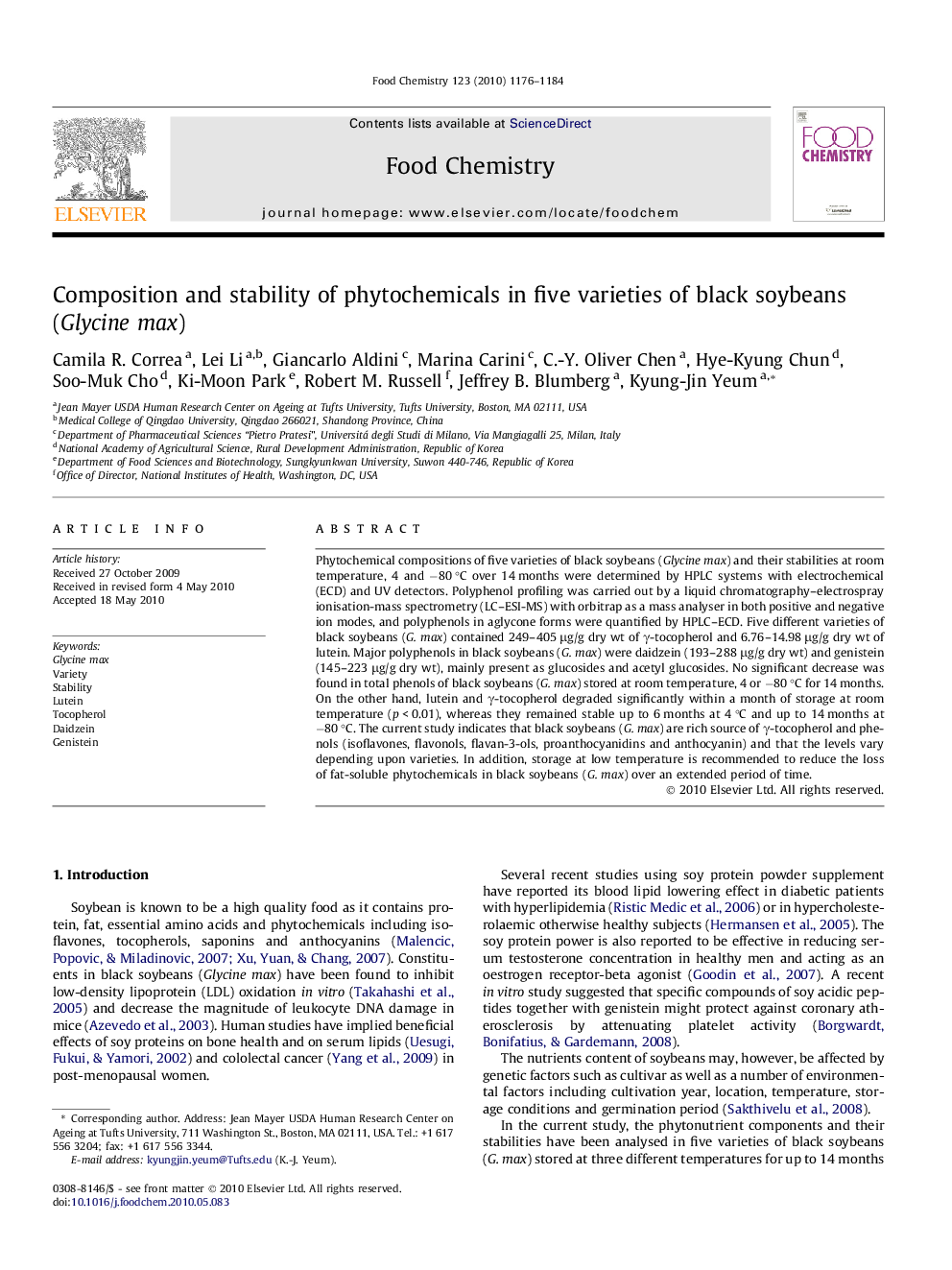| Article ID | Journal | Published Year | Pages | File Type |
|---|---|---|---|---|
| 1185903 | Food Chemistry | 2010 | 9 Pages |
Phytochemical compositions of five varieties of black soybeans (Glycine max) and their stabilities at room temperature, 4 and −80 °C over 14 months were determined by HPLC systems with electrochemical (ECD) and UV detectors. Polyphenol profiling was carried out by a liquid chromatography–electrospray ionisation-mass spectrometry (LC–ESI-MS) with orbitrap as a mass analyser in both positive and negative ion modes, and polyphenols in aglycone forms were quantified by HPLC–ECD. Five different varieties of black soybeans (G. max) contained 249–405 μg/g dry wt of γ-tocopherol and 6.76–14.98 μg/g dry wt of lutein. Major polyphenols in black soybeans (G. max) were daidzein (193–288 μg/g dry wt) and genistein (145–223 μg/g dry wt), mainly present as glucosides and acetyl glucosides. No significant decrease was found in total phenols of black soybeans (G. max) stored at room temperature, 4 or −80 °C for 14 months. On the other hand, lutein and γ-tocopherol degraded significantly within a month of storage at room temperature (p < 0.01), whereas they remained stable up to 6 months at 4 °C and up to 14 months at −80 °C. The current study indicates that black soybeans (G. max) are rich source of γ-tocopherol and phenols (isoflavones, flavonols, flavan-3-ols, proanthocyanidins and anthocyanin) and that the levels vary depending upon varieties. In addition, storage at low temperature is recommended to reduce the loss of fat-soluble phytochemicals in black soybeans (G. max) over an extended period of time.
